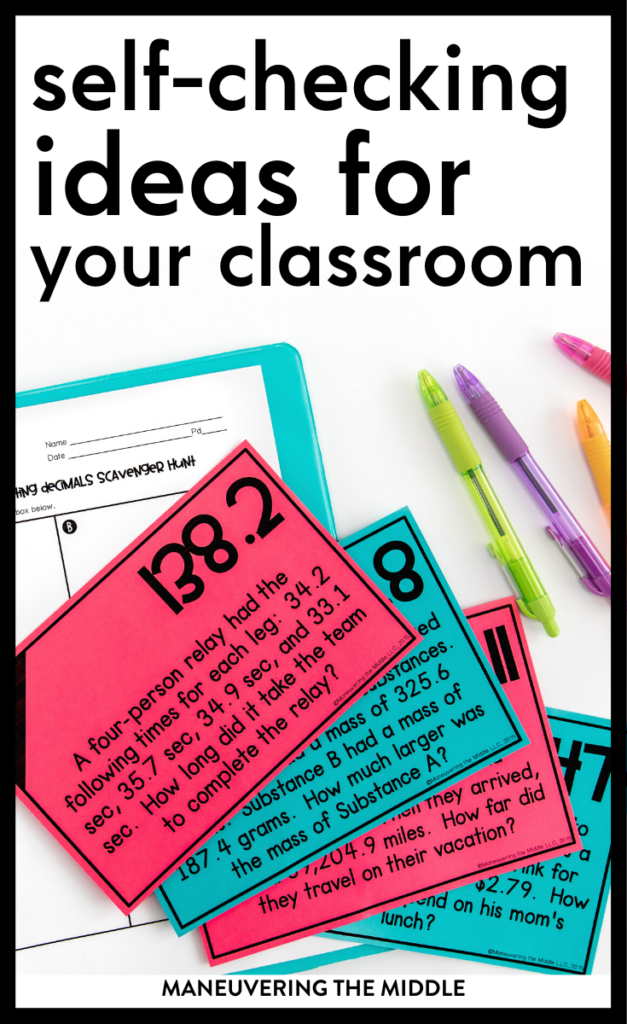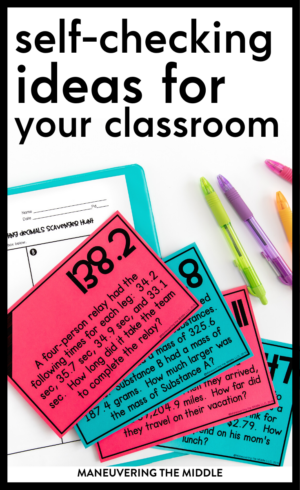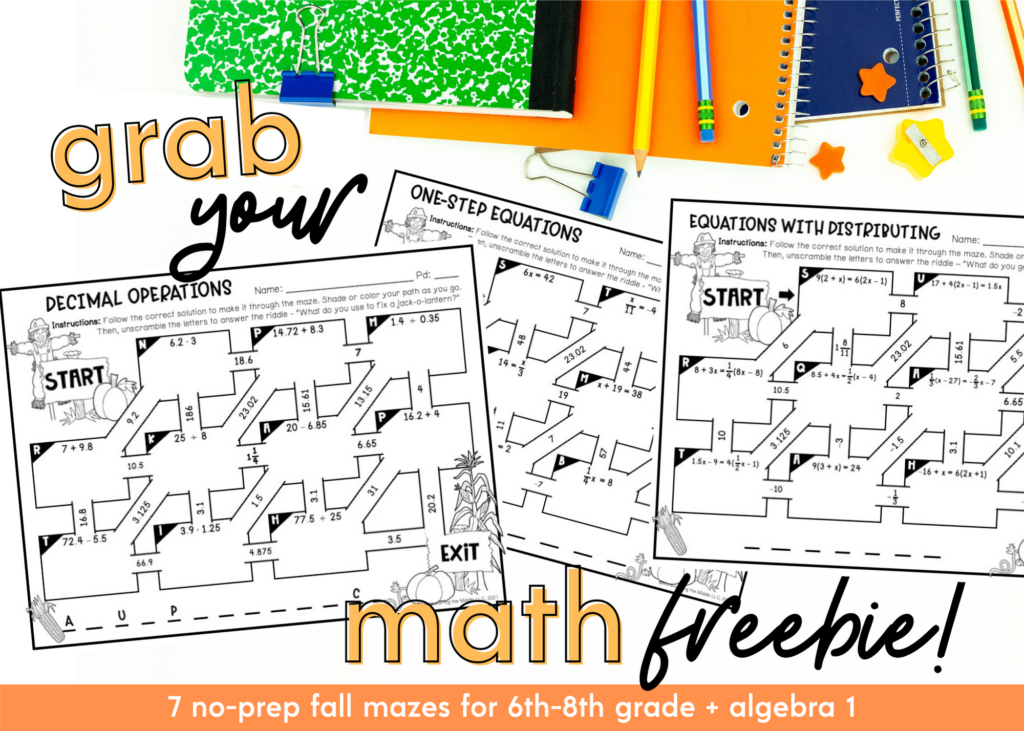One of the best classroom procedures that you can teach your students is the routine for self-checking work. Self-checking activities and self-checking routines were a game changer for me!

Does this sound familiar? You just sit down with your small group when you see a raised hand. You vacate your small group table to check on this student when they point to their first completed problem and ask, “Is this right?” You can’t fault this student for wanting feedback, but there has got to be a better way!
Benefits of Self-Checking
Self-checking procedures and activities will give students the autonomy to take control of their learning. Not only are they taking more ownership of their math understanding, but they are now able to work at their own pace. (Reminder to provide extension opportunities!) They are able to get the feedback they need to move on.
Like in the example above, students just want to know if they are doing it right. Who wants to complete an entire worksheet of problems to find out at the end that they had made a critical error over and over again that could have been corrected after the first problem? On the other hand, there are also students who won’t ask if they are solving correctly, so they could end up in the same boat of making a repeated mistake too.
For the teacher, giving students the ability to check their own work in real-time, gives you the opportunity to circulate to look for common misconceptions, facilitate stations, or host a small group.
Simple Ideas for Self-Checking
These are a non-exhaustive list of self-checking ideas that I have tried in my own classroom. They are all very tweakable! Find out what works best for you and your students.
- Mixed answer key – This was my go to! I would simply project or write the answers to all of the problems in a random order on the board. Students would solve a problem and look up on the board to make sure that they saw their answer somewhere. To be extra clear, these answers were not numbered with the problem number.
- Formative – We have a blog post from 2020 all about Formative that I recommend taking a look at. This technology is gold! You can post an assignment and students can submit answers and receive immediate feedback. Win-win!
- Hidden answer key – I would create an exemplar answer key with all of the work displayed, make copies of it onto a bright color cardstock, and then put the copies into a folder that each table group shared. After every 2 or so problems, students were able to check their work and answers against my answer key. I found that the answer keys being placed in the folder prevented students from being tempted to copy while also giving them the opportunity to check their work against my work. That way if the student did miss a problem, they were able to look at my work to figure out their mistake which was perfect before a test.
- Odd answers Only – Similar to textbooks, I would just write the answers to odd problems on the worksheet right next to the corresponding question.
- Post the answer key to Google Classroom or Schoology for them to check after a certain timeframe.
- Mazes or Scavenger Hunts – These activities are self-checking by nature. Scavenger hunts are a student favorite! And we have this incredible self-checking Corn Maze Activity freebie.
Best Practices for Self-Checking
Before you begin implementing this routine, it is important to explain the why to your students. If you can instill the purpose of self-checking their work (see any of the benefits above), students will be less likely to take advantage.
Remind students that they won’t have the answer keys on assessments or in the real-world, and that the work that they do in class prepares them for both of those times.
Lastly, give students steps for what to do when they get the answer wrong. Do they move on? Rework the problem? Get help from a neighbor? Mark it wrong? That will be up to you and depend on the assignment.
One last reminder is that a self-checking routine doesn’t replace teaching students what to do if they do not know how to solve a problem. One of the downsides of providing a self-check is for students who need help to not ask for help or that they just write down the answer. This How to Get Help Flowchart freebie is a great jumping off point.

Do you have a self-checking routine in your classroom? What self-checking activities have you tried?




The “how to get help in math” freebie link is not working 🙁
Hi, Emerie – Thank you so much for letting us know. It has been fixed!